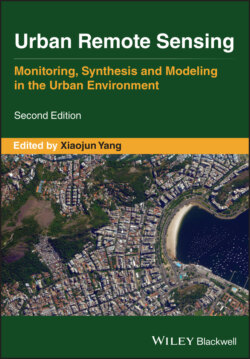Читать книгу Urban Remote Sensing - Группа авторов - Страница 35
2.4.2 DATA PROCESSING AND ANALYSIS 2.4.2.1 QuikSCAT SeaWinds Scatterometer
ОглавлениеThe SeaWinds scatterometer aboard the QuikSCAT satellite (JPL 2006) was launched in June 1999 from the Space Launch Complex 4 (SLC‐4) at the Vandenberg Airforce Base in California, the United States. By definition, a scatterometer is a stable and accurate radar that can measure radar backscatter representing the ratio of the radar signal returned from a target on the Earth over the transmitted signal, expressed in decibels (dB). The QuikSCAT SeaWinds scatterometer had a swath width of 1400 km for the horizontal polarization and 1800 km for the vertical polarization with a nearly daily global coverage of the Earth. Radar backscatter data at each polarization were acquired in antenna conical scans in the full 360° azimuth with a constant incidence angle. QuikSCAT collected data at a Ku‐Band frequency of 13.4 GHz over both land and ocean for more than a decade from 1999 to 2009. With frequent temporal observations, QuikSCAT has a low spatial resolution due to the antenna large footprint in an “egg” shape of 25 km in azimuth and 37 km in range, which is too large for urban remote sensing. Thus, a method was developed to use multiple data collections over a longer period to obtain radar observations at a 1 km grid that is applicable to urban scales. This approach, the Dense Sampling Method (DSM), is summarized in the next subsection to explain how the temporal resolution is traded off for urban monitoring throughout the decade of the 2000s.
